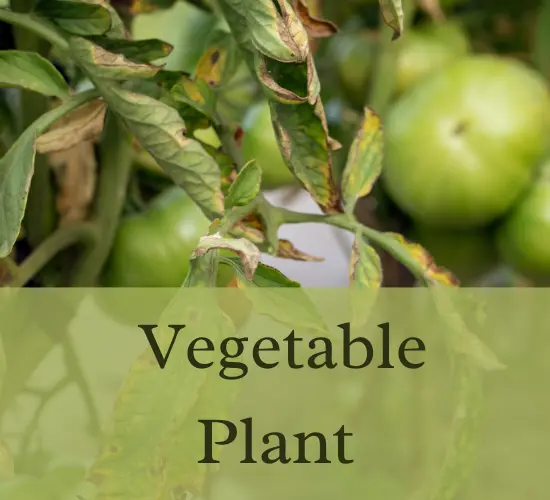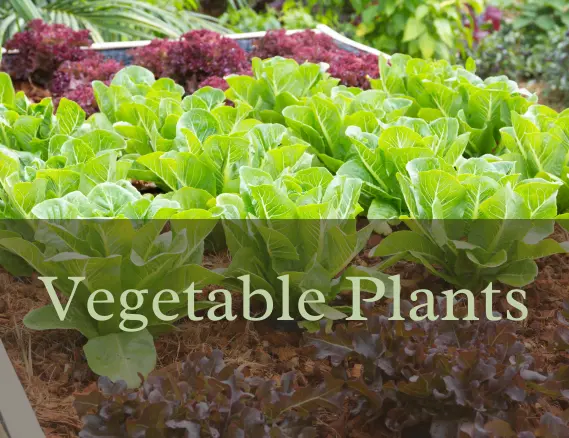As gardeners, we often see our vegetable plants as our own children. We nurture them, provide them with the best care possible, and watch them grow into healthy, vibrant plants. However, just like children, our vegetable plants can fall sick and suffer from various diseases and pests.
One of the most common problems that gardeners face is leaf spots and pests that harm their plants. If left untreated, these problems can lead to plant death and a significant loss of the harvest. Thus, it is essential to identify the causes, symptoms, and treatments for these problems to save our veggies and enjoy a bountiful harvest.
Brown Spots on Vegetable Leaves can arise due to various reasons, including fungal and bacterial infections, environmental factors, and insect attacks. These problems can cause brown and yellow spots on the leaves, stunted growth, and plant death.
These problems are not only frustrating for gardeners but can also be harmful to the environment if treated with harmful chemicals. Therefore, it is crucial to adopt natural and plant-friendly methods to treat these problems and prevent their occurrence in the future.
In this article, we will discuss the causes of leaf spots and pests, the pests that harm plants, and the treatment and prevention methods to save your veggies and enjoy a healthy harvest.
Table of Contents
Key Takeaways

- Leaf spots and pests are common problems faced by vegetable gardeners.
- To prevent leaf spots, ensure proper drainage, avoid overwatering, maintain hygiene, and prevent overcrowding of plants.
- Integrated pest management (IPM) is an effective approach to prevent and control pests without harmful chemicals, using cultural, physical, and biological control methods.
- Regular monitoring, prevention, and proper pest management ensure that the vegetables produced are safe for consumption.
Causes of Brown Spots on Vegetable Leaves
The brown and yellow spots on vegetable plant leaves may be caused by fungal infections such as leaf blight or bacterial leaf spots. These infections are commonly brought about by overwatering, poor drainage, and high humidity levels.
The leaf blight fungus, for instance, thrives in warm and moist environments. It initially appears as small, circular spots that later grow in size, turn brown, and eventually cause the plant to wilt and die.
The bacterial leaf spot, on the other hand, leads to dark brown to black spots on the leaves. As the infection spreads, the leaves turn yellow and fall off, leading to stunted growth and reduced yield.
Overwatering is often the primary cause of fungal infections in vegetable plants. When the soil is waterlogged, the roots become oxygen-starved, and the plant becomes stressed, making it more susceptible to infections.
To prevent fungal infections, it is essential to ensure that the soil is well-drained, and water the plant only when necessary. It is also crucial to maintain proper hygiene by removing and destroying infected plant parts and avoiding overcrowding of plants.
Pests that Harm Plants
Common pests that harm vegetable plants can pose a significant threat to the overall health and productivity of a garden. Two of the most common pests are spider mites and aphids.
Spider mites are tiny, eight-legged creatures that feed on plant sap, causing severe leaf damage and eventual death. They are difficult to detect due to their small size and can reproduce rapidly, leading to a full-blown infestation in a short period.
Aphids, on the other hand, are small, pear-shaped insects that also feed on plant sap, causing distorted growth and yellowing leaves. They can reproduce quickly, leading to a large population in a short time, and can transmit plant viruses.
Integrated pest management (IPM) is an effective approach to prevent and control pests without relying on harmful chemicals. It involves a combination of cultural, physical, and biological control methods.
Cultural control methods include planting resistant varieties, crop rotation, and proper irrigation and drainage. Physical control methods include handpicking pests, using sticky traps, and applying insecticidal soap or oil. Biological control methods involve introducing natural predators, such as ladybugs or lacewings, to prey on the pests.
To effectively manage pests, it is essential to identify the problem early and choose the most appropriate control method for the specific pest. By incorporating natural pest control methods and implementing an IPM plan, gardeners can effectively manage pests while promoting a healthy and productive garden.
Treatment and Prevention

Implementing integrated pest management (IPM) methods is a highly effective approach for preventing and managing pests in vegetable plants. IPM involves using a combination of cultural, physical, biological, and chemical interventions to reduce pest populations and prevent future infestations.
Some natural remedies that are edible plant-friendly options for controlling pests include:
- Neem oil: This oil is extracted from the seeds of the neem tree and contains compounds that repel and disrupt the feeding and reproductive behavior of pests, such as aphids and spider mites.
- Beneficial insects: Introducing predatory insects, such as lacewings and ladybugs, can help control pest populations by feeding on them.
- Companion planting: Planting certain crops together can deter pests, such as planting marigolds alongside vegetables to repel nematodes.
- Homemade insecticidal soap: This is a mixture of mild soap and water that can be sprayed on plants to control soft-bodied pests, such as aphids and mealybugs.
- Crop rotation: Rotating crops can help prevent the buildup of pests in the soil and reduce the risk of plant diseases.
Using natural remedies and edible plant-friendly options for pest control not only helps protect the environment and human health but also ensures that the vegetables produced are safe for consumption.
It is important to note that prevention is key in IPM, and regular monitoring and proper sanitation practices can go a long way in preventing pests from becoming a problem in the first place.
Frequently Asked Questions
Can over-fertilization cause brown and yellow spots on vegetable plant leaves?
As the saying goes, “Too much of a good thing can be bad.” Over-fertilization can indeed cause brown and yellow spots on vegetable plant leaves. Prevention of leaf spots involves proper fertilization techniques and regular soil testing.
How can I tell if my plant has been affected by spider mites or aphids?
To identify spider mites and aphids, examine plants for clusters of tiny insects, webbing, and yellowing leaves. Prevention and treatment of leaf spots and pests include natural insecticides and predatory insects like lacewings.
Are there any natural remedies for leaf blight and bacterial leaf spots?
Natural remedies for leaf blight and bacterial leaf spots include prevention strategies such as providing proper drainage and avoiding overwatering. Neem oil and copper soap can also be used as natural fungicides. Regularly inspecting plants can help detect and treat issues early.
What can I do to increase fruit production in my vegetable plants?
Companion planting and proper pruning techniques can increase fruit production in vegetable plants. For example, interplanting with herbs can deter pests, while pruning can redirect the plant’s energy toward fruiting. Scientific research supports these methods for successful gardening.
Conclusion
Leaf spots and pests can be a nightmare for vegetable gardeners, but there are ways to treat and prevent them. Fungal and bacterial leaf blights can wreak havoc on plant leaves, resulting in brown and yellow spots. On the other hand, pests like spider mites and aphids can cause yellowing leaves and even death of the plant.
Choosing organic and plant-friendly treatment options like natural insecticides and predatory insects like lacewings can help save your veggies. It is important to note that prevention is key when it comes to leaf spots and pests. Providing proper drainage, and air circulation, and avoiding overcrowding can help reduce the risk of fungal and bacterial infections.
Additionally, regularly inspecting your plants for signs of pests and treating them early on can prevent further damage. In conclusion, leaf spots and pests can be daunting for vegetable gardeners, but with the right treatment and prevention methods, you can save your veggies.
By choosing organic and plant-friendly options and regularly inspecting your plants, you can protect your precious crops from harm. Remember, a little bit of prevention goes a long way in maintaining a healthy and thriving vegetable garden.